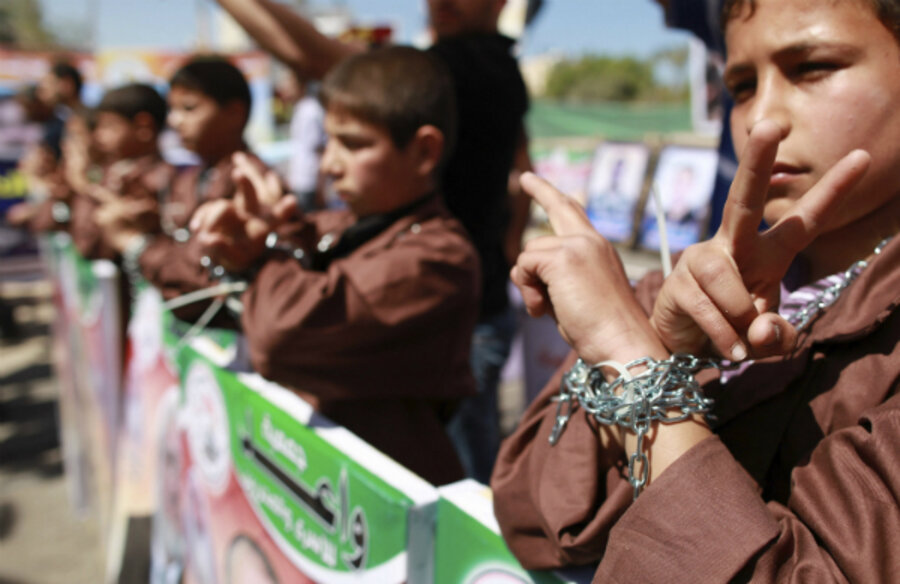Palestinian hunger strikes: the power of peaceful protest
Loading...
| Tel Aviv
It may not have received much international attention, but Palestinian hunger strikes, which ended on May 14, have the potential to shake the status quo of the Israeli-Palestinian conflict.
That potential lies in the nonviolent nature of the strikes, which were carried out by Palestinians in Israeli detention, backed by grass-roots organizers, and concluded with Israel agreeing to improve prison conditions.
Similarly, the rise of strategic nonviolence as a protest tool by Palestinians could well increase domestic and international pressure on Israel for a peace settlement. It could also help unify Palestinian society, which is sharply divided.
Palestinians are acutely aware of the power of peaceful protests of the Arab Spring, discussing them as a strategy for themselves. The hunger strikes represented a new emphasis on nonviolent dissent and reflected some of the characteristics of the Arab awakening: They were well organized, had massive support among the Palestinian public, and occurred over a period of time and on a large scale.
Hunger strikes are not an entirely new tool for Palestinians. The last year has already seen at least two earlier strikes involving a variety of demands. This most recent wave ended with agreements to allow family visits and to terminate “administrative detentions” – imprisonment without charges or trials – at the end of the six-month term. In return, prisoners agreed not to engage in criminal or terror activities from their cells.
The difference between this last group of hunger strikers and the previous ones rests first on the large number of people involved – conservatively estimated at 1,500 out of 4,500 prisoners.
Second, it was pre-planned and coordinated by the prisoners and backed by important political stakeholders – from the militant Islamic group Hamas to the secular Fatah, led by Palestinian President Mahmoud Abbas (although Fatah’s support came at the eleventh hour).
Third, and most important, this last wave of strikes was actively supported by grass-roots Palestinian groups and the public. They both rallied behind the prisoners, mobilizing and organizing nonviolent street demonstrations.
The future impact of this campaign is far from clear, but it could certainly serve as a model for using strategic nonviolence. The public protests managed to create a united front within the divided Palestinian society, while shifting power away from a largely dysfunctional and factionalized political system and back to the people. However, the protests did fail to generate strong international attention, let alone support – certainly a discouraging sign.
For Israel, the rise of Palestinian strategic nonviolence could be a game changer. If Israel responds to nonviolence with violence this can truly
backfire, domestically, internationally, and among Palestinians. Similarly, the campaign over the end of “administrative detention” for prisoners exposes the problematic aspects of Israel’s military presence in the West Bank.
The Palestinian prisoner campaign brings to mind the 1980-81 hunger strikes of prisoners affiliated with the Irish Republican Army. Britain refused to respond to the prisoners’ demands. The subsequent death of IRA volunteer Bobby Sands mobilized public opinion on behalf of the prisoners and the IRA. In this case, Israel wisely responded.
Benedetta Berti is a fellow at the Institute for National Security Studies, a lecturer at Tel Aviv University, a member of the Atlantic Council’s Young Atlanticist working group, and coauthor of the book, “Hamas and Hezbollah: A Comparative Study” (Johns Hopkins University Press, 2012). The views expressed here are the author’s alone.





